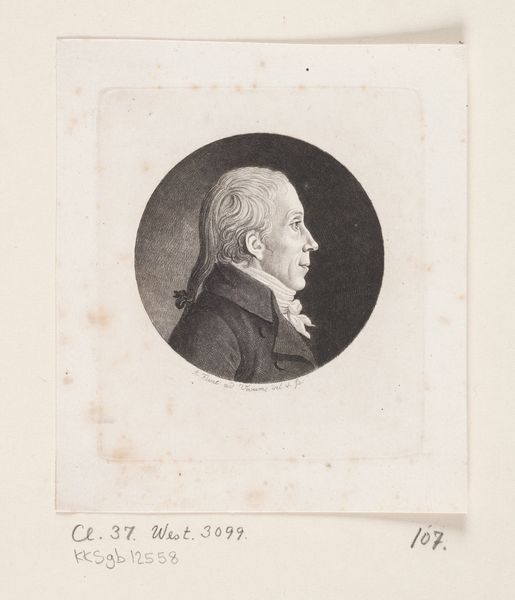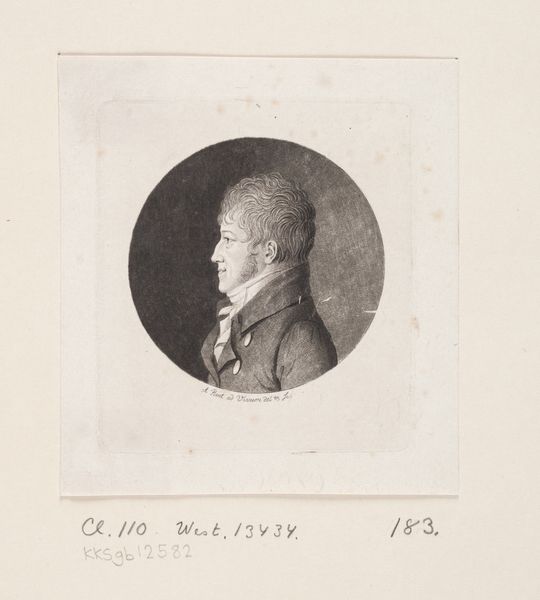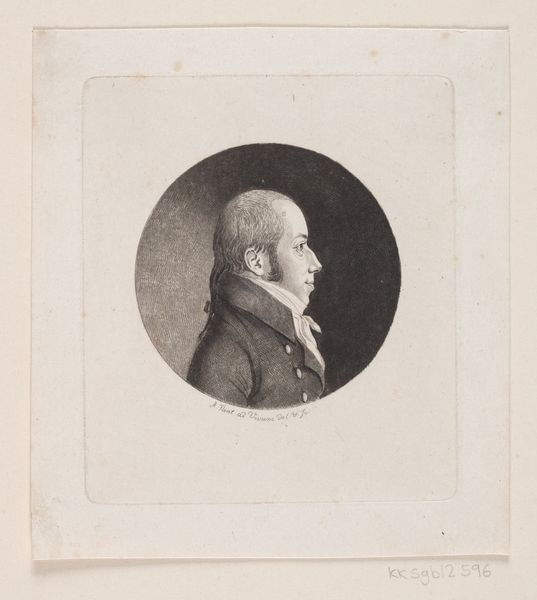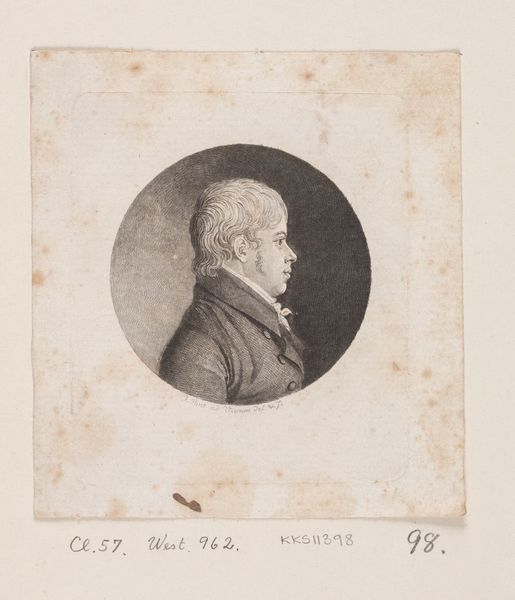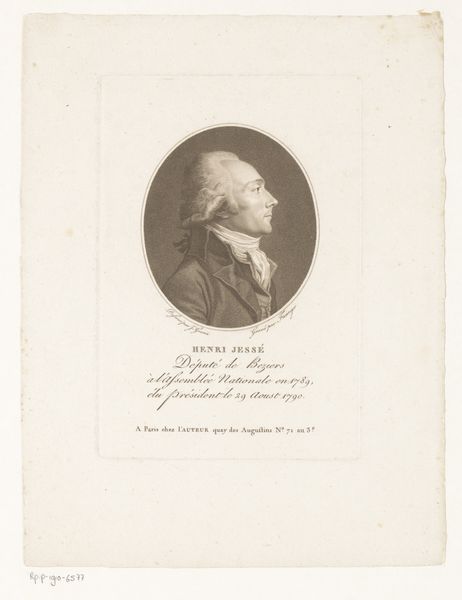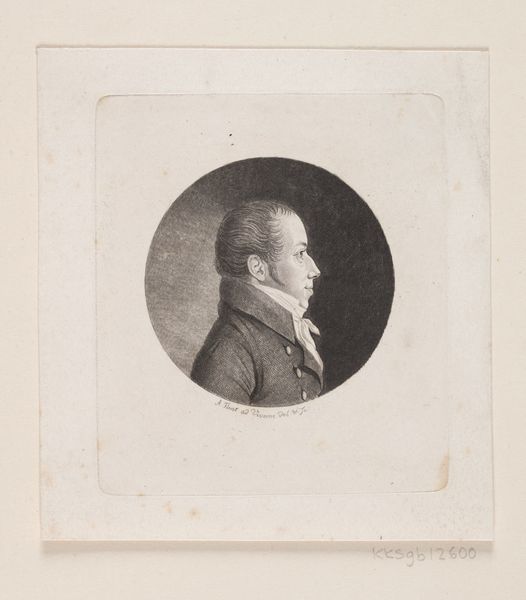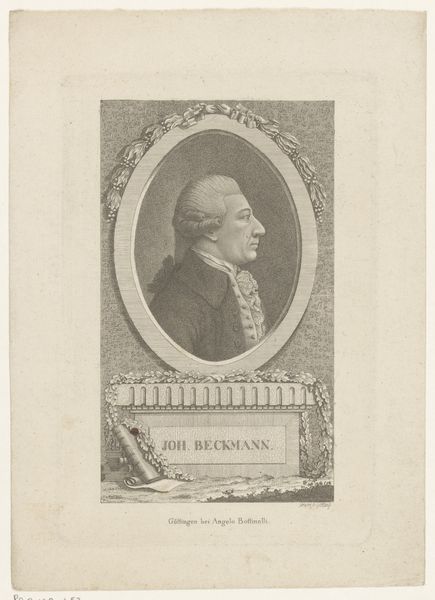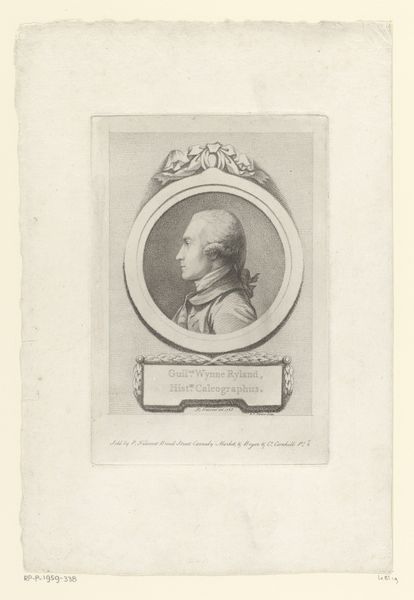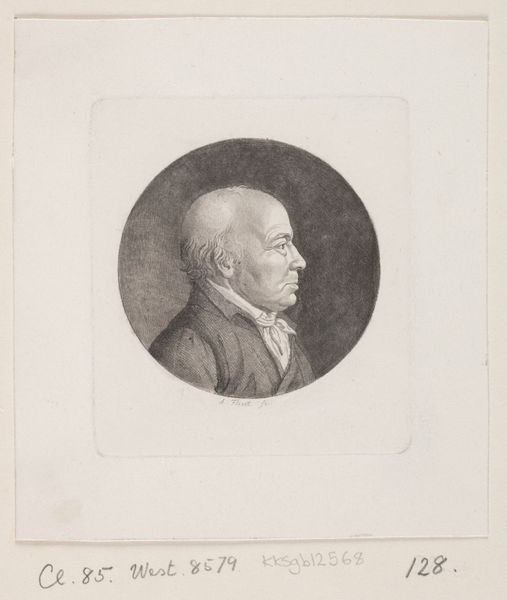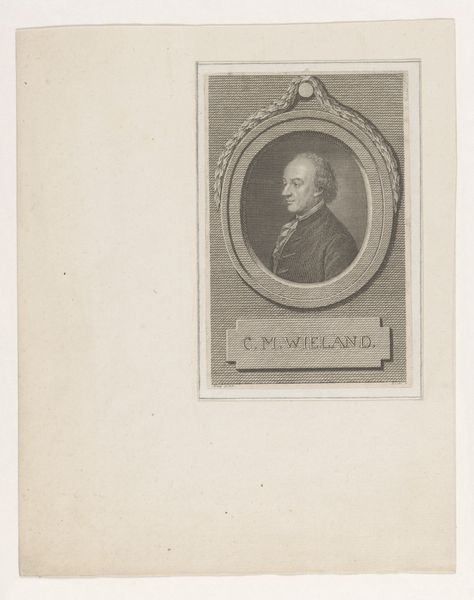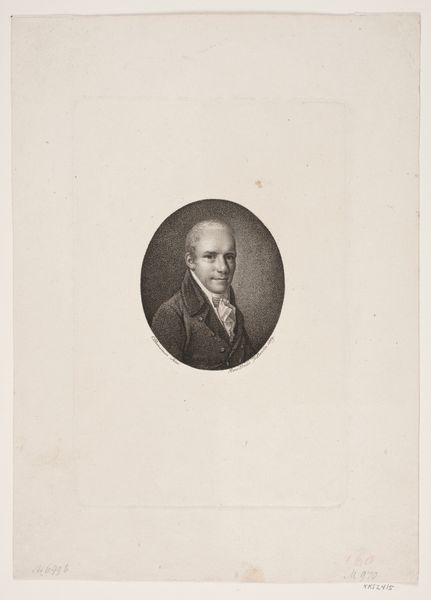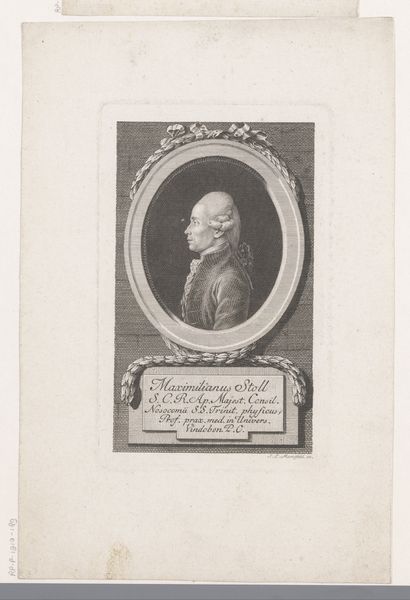
#
portrait
#
neoclacissism
# print
Dimensions: 62 mm (None) (billedmaal), 95 mm (height) x 80 mm (width) (plademaal)
Curator: Welcome. We are standing before a print titled C. F. Rantzau, made sometime between 1767 and 1824. The artist is Andreas Flint. It's currently held here at the SMK, the Statens Museum for Kunst. Editor: My initial impression is one of cool, collected authority. The stark, monochromatic rendering gives him a sort of untouchable aura. There's a definitive line, a kind of almost defiant poise about his face. Curator: Yes, that effect stems, I think, from the artist's commitment to neoclassical ideals. Notice how the subject's profile is presented within a defined circular frame, and how the artist utilizes controlled lines to produce a sense of clarity and order. Editor: Absolutely, that circular framing gives the subject the same significance as the emperor on a coin. That and the placement and gaze direction—eyes looking toward the future, as though imagining some noble deed to be done. This posture seems very calculated to communicate something beyond simple recognition. Curator: Precisely. Furthermore, observe the deliberate absence of overt ornamentation or dramatic lighting. The artist clearly sought to embody rationality and restraint, key tenets of neoclassicism which served as a counterpoint to the extravagance of the Baroque. Editor: Yet the delicate tonal gradations speak to an underlying emotional nuance, don't you think? Like, in the folds of his coat—the almost nervous hatching reveals a subtle interiority despite his official rank. It isn’t a purely detached presentation, as neoclassical works tend to be, but offers instead the tension between an ideal and a tangible presence. Curator: A very interesting point! I agree the treatment of light suggests movement beneath the calm. Editor: For me, images like this function as a lens through which we can examine shifting notions of power, representation, and the performance of identity in a society transitioning to new world order. It's never only about appearances. Curator: A rich artwork from an important period of European artistic transition. The blending of restraint with suggestion creates an intriguing effect.
Comments
No comments
Be the first to comment and join the conversation on the ultimate creative platform.
